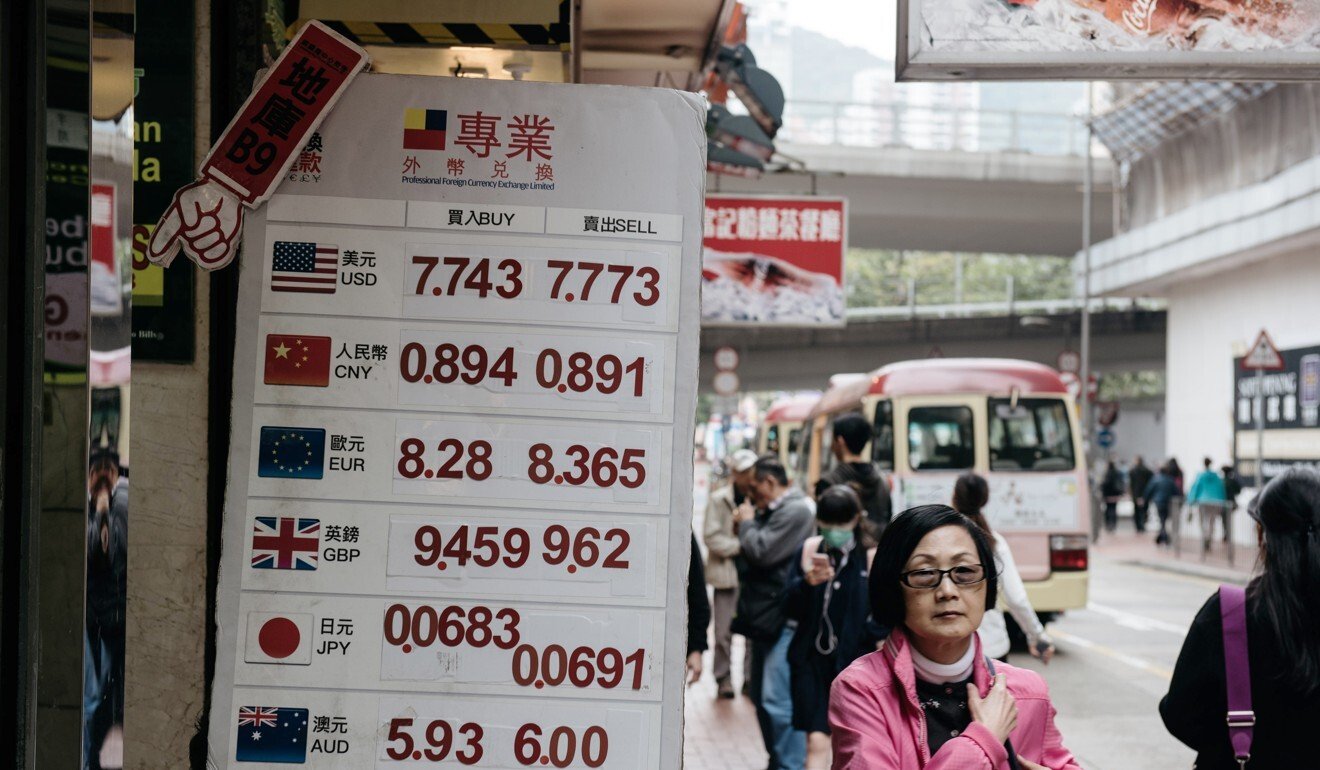
Currency peg vital for Hong Kong’s status as global finance centre even as US dollar declines, says former monetary authority chief Joseph Yam
- Yam, who helped set up the peg in 1983, still believes it is in the best interests of Hong Kong because it gives confidence to international investors
- US unlikely to ‘weaponise’ the peg or capital markets as it would hurt itself in the process, says Yam
Hong Kong should hang on to its 37-year-old currency peg to the US dollar because a link to the world’s most used currency is the best option to maintain its role as an international financial centre, said the city’s longest-serving monetary authority chief.
Joseph Yam Chi-kwong, who helped set up the peg in 1983, still believes fixing the Hong Kong dollar to the greenback at 7.8 is in the best interests of Hong Kong because it gives confidence to international investors to come here to do business.
On Wednesday, Yam gave an hour-long speech and media interview via a Zoom conference arranged by the Our Hong Kong Foundation, a think tank established in 2014 by former Chief Executive Tung Chee-hwa.
“Tying the local dollar with the most important currency in the world is the most appropriate monetary policy for Hong Kong,” he said, rejecting the idea that the peg should be modified to link with a basket of currencies or the yuan.
Yam’s supportive voice comes after the recent decline of the US dollar and a sharp rise in the gold price led the US investment bank Goldman Sachs to warn on Tuesday that the US dollar’s reign as the world’s reserve currency is coming under threat.

The Hong Kong dollar strengthened to 7.7505 on Wednesday afternoon, putting it right at the strong end of the permitted trading band beyond which the HKMA steps in to intervene. On Thursday morning, the HKMA sold HK$3.1 billion Hong Kong dollar and bought the same amount of US dollar to weaken the currency.
This year, the HKMA has intervened 30 times and sold a total of HK$109.3 billion Hong Kong dollars to weaken the currency after hot money flooded in as investors chased mega IPOs.
The exchange rate is allowed to move within a trading band of 7.7500 to 7.8500. When it breaches either the upper or lower limit, the city’s de facto central bank, the HKMA, is mandated to either buy or sell the local currency to bring the exchange rate back within the band.
While Yam agreed the US dollar and investment markets might be at risk of sharp declines, he insisted it would not affect the peg because it has happened in the past, and the system still worked smoothly.
While Hong Kong does not need Washington’s approval, the peg cannot work if the US cuts off the city’s government and financial firms from trading the US dollar. That, however, is viewed as a last resort that could trigger global financial turmoil, because Hong Kong is the third-largest US dollar trading centre worldwide, behind only the US and the UK.
“I hope clever politicians like Trump and Pompeo would not opt for the nuclear option,” Yam said.
Given the sheer size of the US financial system and dominance of the dollar, Yam said the US “has a powerful arsenal at its disposal”, but “deploying the powerful arsenal could well end up hurting itself badly.”
He therefore believes the possibility of the “weaponisation” of the financial system is low, with the US sanctions likely only to focus on certain individuals and firms.
The currency peg and the resilience of the city’s capital market is an anchor helping Hong Kong to weather its worst economic recession in decades. The city’s financial coffers comprise one of the world’s largest currency reserves, at US$445.9 billion as of the end of June.
The local government has handed out HK$300 billion (US$38.7 billion), or 10 per cent of economic output, to support an economy hammered by the Covid-19 pandemic and help residents survive the slump.
Yam described the rescue package as “entirely appropriate and affordable” but said there is room for more, when the figure is compared with the aid provided by some other regional governments – Singapore spent 20 per cent of gross domestic product on handouts, Thailand spent 13 per cent and Malaysia handed out 19 per cent.
“Hong Kong has zero debt,” he said, while its accumulated fiscal reserves amount to about HK$1.2 trillion (US$154.83 billion), he pointed out.
“The running of a large but temporary budget deficit would not erode the fiscal discipline in Hong Kong that has underpinned its status as an international financial centre.”
For Hong Kong to move forward after the pandemic, he said the Greater Bay Area project would be the key. Beijing unveiled the blueprint in February last year for the ambitious plan to integrate Hong Kong, Macau and nine Guangdong cities into an economic powerhouse.
To make it successful, Yam said it needs to encourage more capital flow. He suggests allowing Hong Kong banks to accept deposits and lend money in the Greater Bay Area’s mainland cities, and vice versa, while Beijing ring-fences the capital flow within the region to avoid the risks spreading to other parts of the country.

